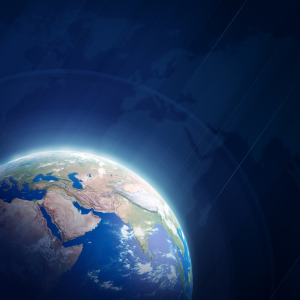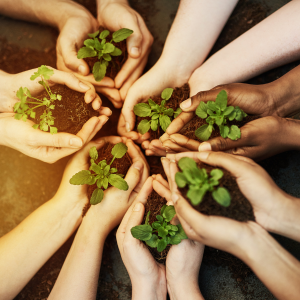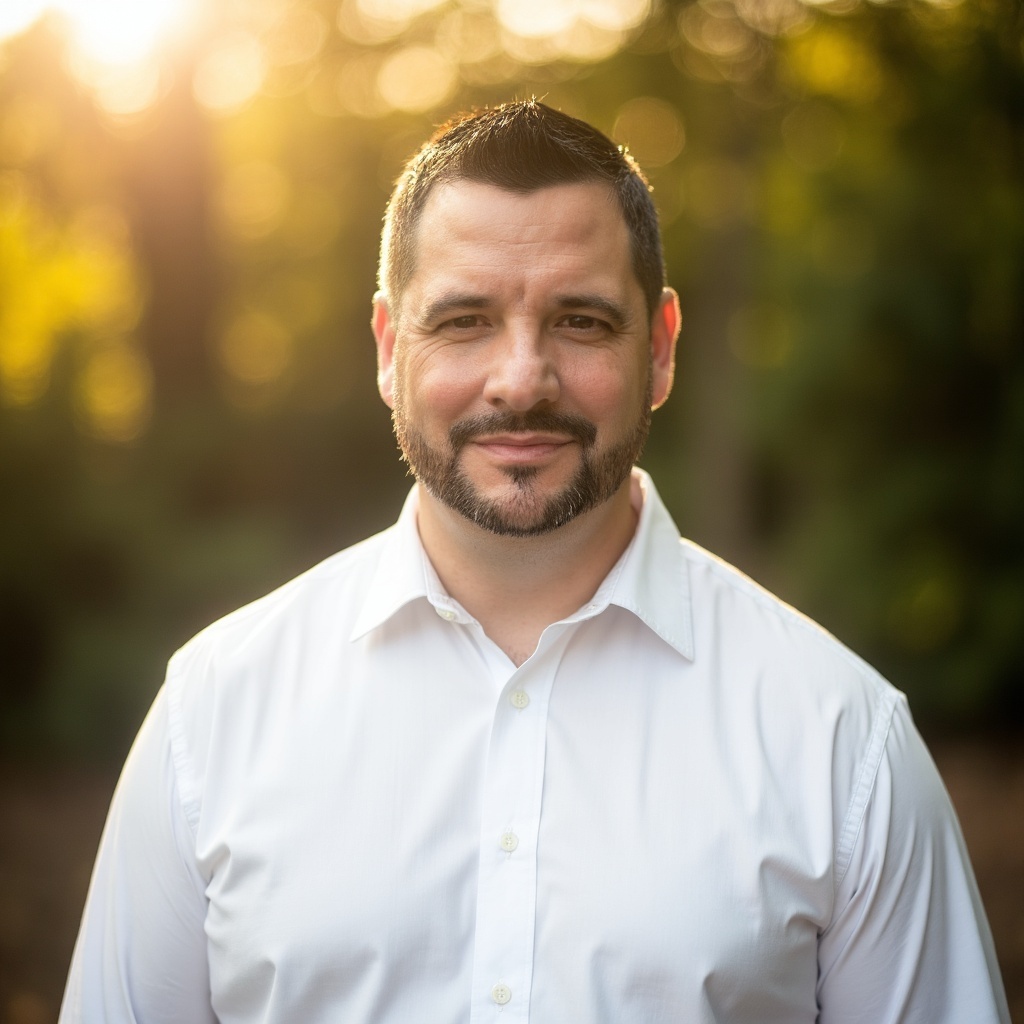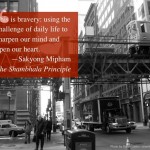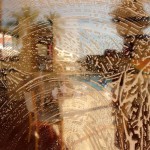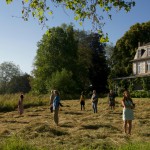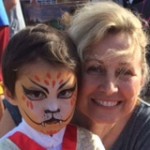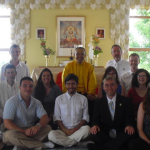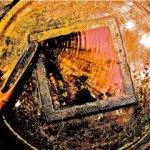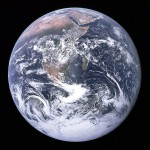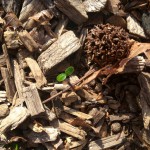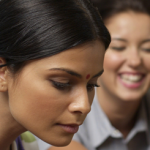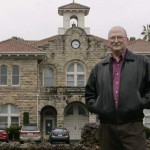Friday
A World Built on Pain: The Call for Healing and Change
By George Cassidy Payne
We live in a world where systems of power and dominance are designed to destroy the very planet that sustains us. These systems, though old in origin, have become more visible than ever before. They are built on extraction, exploitation, and a blind pursuit of progress that disregards the balance of life on Earth. Mother Earth is suffering under the weight of human-made unsustainable practices.
As Thich Nhat Hanh, a renowned teacher of peace and mindfulness, has often said, our connection to the Earth is not some abstract concept but something profound and immediate. To love the Earth is to love ourselves because we are intricately woven into the fabric of life. Yet, despite this deep connection, the structures of our society continue to foster destruction. Economic systems prioritize growth, accumulation, and exploitation, often at the cost of the environment and all of its creatures. The question we must ask is: where does this path lead us? Will our desire for control and comfort continue to erode the very systems upon which we depend?
Civilization, as we know it, is unsustainable. The rise of agriculture over 10,000 years ago marked the beginning of a trajectory where humanity’s relationship with nature became one of domination. We have seen entire species wiped out and ecosystems decimated. Today, 90% of fish populations are depleted, and 80% of old-growth forests have been destroyed. This is the legacy of human progress. We’ve created systems that exploit nature, driven by a desire to conquer and control. But at what cost?
The violence inflicted upon the Earth is not just physical; it’s linguistic and ideological. The discourse surrounding nature and sustainability has been shaped by political and economic forces that treat the natural world as something to be harvested, not a living community to be nurtured. We are not separate from nature; we are part of it. Yet, in our arrogance, we act as though we are above it, consuming without consequence. The truth is clear: without nature, we cease to exist. The buffalo skulls scattered across the Plains are a haunting reminder of what happens when we push too far, too fast, and too greedily.
Our ego has placed itself in direct opposition to the ecological system that sustains all life. The needs of nature must come before the needs of economic systems, but we continue to prioritize growth over balance, and consumption over care. This is a profound injustice — not only to the Earth but to all the creatures that depend on her.
We are dealing with pathological systems — economic, political, and social structures that are broken and destructive by design. These systems perpetuate ecological collapse, social inequality, and environmental degradation. The damage they cause is not an accident; it is the logical outcome of the values that drive them. These are not systems that can be tweaked or reformed; they need to be re-envisioned.
To create a world that is just and sustainable, we must re-imagine power, ecology, and healing. This requires a radical shift — a transformation in how we relate to one another, the Earth, and ourselves.
Reenvisioning Power
Power, as we know it, is often associated with domination, control, and exploitation. We see this in the way political, economic, and social structures perpetuate inequality and environmental harm. These hierarchies place certain groups — usually those with wealth and technological advantage — above others, including the natural world.
True power lies in interconnection, reciprocity, and mutual respect. It arises when we recognize our interconnectedness with all life. Gandhi’s principle of non-cooperation with everything humiliating points us toward an alternative vision of power — one that does not dominate or subjugate but works in harmony with the Earth and one another. Power, in this sense, is not something to be hoarded or controlled. It’s something to be shared, cultivated, and used responsibly for the collective well-being of all.
Reenvisioning Ecology
Ecology, in its current treatment, is often viewed through a narrow lens: nature as something to be exploited, commodified, and used for human gain. We speak of nature as “resources” to be extracted, “capital” to be managed. This extractive relationship has brought us to the brink of ecological collapse — biodiversity loss, deforestation, ocean acidification, and climate change are just a few of the destructive forces at play.
A new ecological vision is required — one that sees nature not as a separate entity to be controlled but as a living, breathing community with which we share space. It’s a worldview that recognizes the sacredness of all life and understands that human flourishing is tied to the health of ecosystems. In this vision, our relationship with the Earth becomes one of stewardship, reciprocity, and respect, grounded in the understanding that the health of the planet directly influences the well-being of all species, including ourselves.
To heal the planet, we must move beyond the extractive model of exploitation and embrace a more holistic, regenerative approach that centers on sustainability, biodiversity, and the restoration of natural cycles.
Reenvisioning Healing
Healing is often seen as a personal journey — a process of mending broken bodies or minds. But true healing extends beyond the individual. It encompasses communities, ecosystems, and the Earth itself. Healing involves confronting the deep wounds caused by centuries of exploitation, oppression, and violence. It requires reconciliation — not just between people but between humanity and the Earth.
Healing begins by acknowledging the trauma caused by our systems — systems that perpetuate environmental destruction, social inequality, and violence. It involves the work of repair, restoration, and regeneration. Just as individuals must heal from their wounds, societies and ecosystems must heal from the violence of extraction, colonization, and environmental degradation.
This process must also be inclusive, recognizing the voices and needs of marginalized communities — whose struggles are often intertwined with the environmental crisis. Communities of color, indigenous peoples, and low-income populations bear the brunt of both social injustice and ecological harm. Their healing is integral to the broader healing of the world.
The Power of Music and Local Action
One of the most powerful tools in this journey toward a nonviolent world is music. Music transcends barriers and speaks directly to the heart. In the fight for social and ecological justice, music serves as a powerful tool for expression, healing, and resistance. We must give voice to those whose stories have been silenced by the dominant narrative of violence and exploitation. Music becomes an act of resistance, a means of resisting the forces that seek to divide us and disconnect us from one another and the Earth.
However, music alone is not enough. We must also recognize the importance of local action. While large-scale movements are necessary, it’s the everyday actions, rooted in communities and local networks, that lay the foundation for lasting transformation. These small, collective actions have the potential to create a ripple effect — a nonviolent contagion that spreads from the grassroots to the global.
Challenging the Myth of Military Effectiveness
One of the most enduring myths that sustain these destructive systems is the myth of military effectiveness — the belief that military power is the ultimate means of achieving peace and security. But the truth is, that violence breeds more violence, and military solutions often exacerbate the very crises they are meant to resolve. Revolution does not always have to be violent. We can challenge this myth by demonstrating alternative forms of power — forms grounded in nonviolence, compassion, and cooperation.
True power, as Hannah Arendt wisely observed, is not violence; it is the ability to act in concert with others toward a common goal. Power lies in collective action, solidarity, and the strength of a community united in nonviolent resistance.
Contemporary Faith-Based Activism
Faith-based activism offers another lens through which to view the transformative potential of nonviolence. Rooted in compassion, justice, and a deep sense of moral responsibility, faith-based movements have often been at the forefront of social change. From the civil rights movement to climate justice, faith communities have played a crucial role in challenging injustice and advocating for a more sustainable world.
As we work to build a nonviolent, sustainable future, we must look to these faith-based activists who are mapping a nonviolent contagion — a global network of compassion, justice, and solidarity. This movement is grounded in the belief that true peace can only be achieved when all beings are respected and honored.
Conclusion
We stand at a critical moment in human history. The systems that govern our lives are broken, and the Earth cries out for healing. The path we take now will determine the future of our planet and all the life it sustains. The time for change is now. But this change must come from within. We must act out of love — for the Earth, for one another, and future generations. Only through radical transformation — grounded in nonviolence, respect for nature, and collective action — will we begin to heal the world and ourselves.
The change we need cannot come from the same systems that created the problem. We must, as Gandhi said, “be the change we wish to see in the world.”
***
George Cassidy Payne is a writer, philosopher, and advocate based in Rochester, NY. His work delves into themes of spirituality, social justice, philosophy, and the human condition. Known for his introspective essays, evocative poetry, and thought-provoking commentary, George contributes to various publications and platforms, offering a distinctive perspective on contemporary issues and timeless questions. He lives and works as a counselor in Irondequoit, NY.
Entries filed under Opinion Pieces
How Many Spiritual Teachers – HIGHLIGHT
How many teachers do you need to reach enlightenment? Don’t forget to count yourself! by Marcos Taquechel I often read spiritual and self-help books, and become inspired. I feel like I have a deep understanding while the book is in front of my eyes; I get momentarily enlightened. ... continuePosted September 11, 2016 by CGH
Fearless Amidst Barbarian Arrogance – HIGHLIGHT
An exploration of what fearlessness means in our world today by Ron Schultz “They are fearless in the midst of barbarian arrogance” This phrase is chanted in every Shambhala Center on the planet. Within the Invocation and Homage, these words ring out. Fearless in the midst of barbarian arrogance. ... continuePosted January 26, 2016 by CGH
Opening the Dimension of Sacred Awe – HIGHLIGHT
miksang image by Charles Blackhallarticle by Roger Guest In this age of information technology, many paradigms are crumbling. Although populations are rising, fewer and fewer people are actually embracing traditional religions and the current slate of beliefs and sacraments is seen as less and less relevant. Fundamentalism ... continuePosted September 9, 2015 by
A Call for Mental Illness Support Group
An editorial by Ineke de Wit Some time ago in an interview with Sakyong Mipham that I had about my bipolar condition, the suggestion came up to see what could be done for people suffering from mental illness. I always felt that mental illness is still a vast ... continuePosted May 3, 2015 by Dan
Exiting Samsara – HIGHLIGHT
Dylan & HojunOne Perspective on Having Children by Hojun Laura Jackson, New York City On a recent trip to California, I witnessed my 3-year-old nephew Dylan launch a spectacular tantrum at a kiddy carnival following my brother’s failure to win him a goldfish. Nothing mattered more than going ... continuePosted January 25, 2015 by
Living at a Land Centre, and Why it Matters
Posted in Dorje Denma Ling’s kitchen. Photo by Rhonda Newcombe The most beneficial thing I’ve ever done When I ask myself, “what has been helpful in my life” or “when was I really being transformed by the Shambhala teachings”, my mind immediately flashes to my time as a ... continuePosted May 21, 2014 by Nyima
Cultivating Clean Friendship… – HIGHLIGHT
miksang …in the Sangha written by Maya Rook edited by Ani Dawa Chotso “The sangha is the community of people who have the perfect right to cut through your trips and feed you with their wisdom, as well as the perfect right to demonstrate their own neurosis and be seen ... continuePosted May 9, 2014 by
Creating Enlightened Society on a Lifeless Planet – HIGHLIGHT
Are We Reacting with Urgency to the Climate Crisis? by Irene Lorch-Wauchope, Halifax, Nova Scotia As Buddhists, we understand that we create our reality with our thoughts. Unfortunately, this also applies to how many of us are reacting to the increasing urgency of the climate crisis. No matter ... continuePosted November 24, 2013 by
Even Psychopaths Need Love – HIGHLIGHT
on Buddhism and Guns by Lodro Rinzler Q: How do Buddhists reconcile with the idea that psychopaths (aka sociopaths, like Hitler, Manson, Bundy), may not be born with basic goodness, thereby shattering the tenet that all beings are born with basic goodness? As unpopular as this view may be ... continuePosted October 13, 2013 by
Imperial Culture vs. Cultural Imperialism – HIGHLIGHT
COLUMN: Living Shambhala Culture This series of articles is brought to you by the Shambhala Office of Culture and Decorum. We hope that these offerings will bring fresh perspectives on living our principles, invoking drala and enriching culture in our homes, centers and communities. If you have ... continuePosted October 7, 2013 by
Finding Out For Myself – HIGHLIGHT
COLUMN: In Everyday Life by Cheri Tiernan, Atlanta Shambhala When you discover that 100 million women are missing from the planet, your heart breaks, and the knowledge it imparts becomes something you can’t ignore. At least that’s what happened to me. Turns out, though, when something is enormous ... continuePosted September 30, 2013 by
Targeting a Change of Heart – HIGHLIGHT
A leadership coach and consultant explores how confidence in Basic Goodness influences his work. by Diederik Prakke, Senior Trainer-Coach, Hanoi, Vietnam edited by Jayne Sutton, Shambhala Times Volunteer Editor Phanlany was a happy girl, her grandfather’s sweetheart. He taught her to play the flute, and she touched hearts when ... continuePosted August 16, 2013 by
Politics Is Internal – HIGHLIGHT
Politics as Practice by Larry Barnett, Shambhala Director of Communications There is a yogic practice in Tibet that takes place in a charnel ground, or what we call a graveyard. Graveyards in Tibet, which is mostly rock, are not the neat and grassy parks we have here in ... continuePosted August 3, 2013 by Larry Barnett
The Plight of Canadian First Nations Children – HIGHLIGHT
NEW COLUMN: In the News article by Linda V. Lewis Of 150, 000 First Nations children in Canada, more than 3,000 died in the residential school system, which ran from the 1870s until the 1990s. These shocking findings are the result of a first systematic search of government ... continuePosted March 31, 2013 by
Does Shambhala Discriminate Against the Disabled?
I was shocked when I went to a retreat at a Shambhala retreat centre recently. A woman arrived in a wheelchair and it was quickly realized that she had no wheelchair access to her dorm room. She also had a hard time navigating between rooms in ... continuePosted February 9, 2013 by
![]() RSS feed for the Opinion Pieces category
RSS feed for the Opinion Pieces category
View all posts from authors in Opinion Pieces: jillian_johnson

